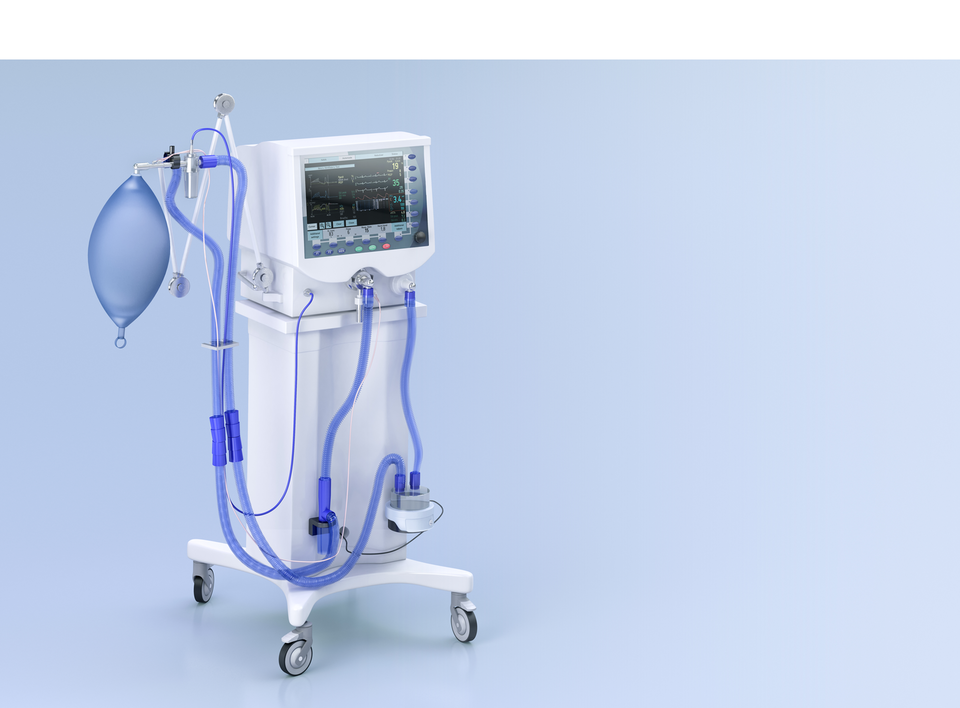
The future outlook of the ventilator market post-Covid-19
The ventilator market has grown exponentially during the Covid-19 pandemic. According to GlobalData, the ventilators market was worth nearly $1.1bn in 2019 and is likely to grow to $4.8bn by 2020 due to a huge demand during Covid-19.
Ventilator revenues of major manufactures, including Dragerwerk AG & Co KGaA, Getinge AB, Hamilton Medical AG, Medtronic Plc, Philips Respironics Inc, and GE Healthcare LLC are considerably above previous years in 2020.
The trend is moving towards a normalised demand for Covid-19-related devices. GlobalData expects global demand for ventilators to steadily return to normal by the end of 2020 with a gradual decrease in sales in the coming year due to its load purchasing in 2020.
Most of the new ventilators that were purchased due to the Covid-19 crisis are being held in reserve. The actual usage of ventilators has proven to be lower than original projections as the pandemic has progressed and clinical knowledge has improved.
Nevertheless, considering the surging cases in North America and Europe, the stock can be used in case of future waves of Covid-19 in 2021. The market is expected to reach $1.5bn by 2028 led by the intensive care unit (ICU) ventilators segment.
GlobalData is positive about the future outlook of the ventilators market because the majority of recently mass-produced ventilators are considered emergency ventilators. These simpler ventilators cannot generate the precise air delivery required for patients with acute respiratory distress syndrome, nor provide decision support tools for lung-protective ventilation.
There are still regions with demand for advanced ICU ventilators that are designed for invasive ventilation of severe patients during their ICU stay. Additionally, the pandemic positively impacts the market for overall respiratory care infrastructure. Countries around the world will continue to build an inventory of ICU ventilators and associated capital equipment such as humidifiers, oxygen supply systems, and disposables in the following years.
The Covid-19 pandemic was initially typified with worldwide calls for more ventilators, creating unique partnerships with medical device companies and the engineering sector. Non-medical manufacturers, such as some automotive makers, had temporarily shifted their focus to developing ventilators by cooperating with current medical manufacturers.
The most successful partnerships were between existing ventilator manufacturers and large engineering companies, through the expansion of manufacturing scale for existing or slightly modified versions of existing approved ventilators. These collaboration experiences will accelerate the implementation of new technology such as 3D-printing in the medical industry.
The spotlight on ventilators during the pandemic also attracts researchers’ attention. There were many creative ideas such as negative pressure ventilation and automated bag valve mask ventilators. Many research facilities such as NASA have developed Covid-19 ventilators.
Although most of the prototypes have not been used in clinical practice during the pandemic, continuous innovation will improve the devices and clinical outcomes. In the near future, more advanced function and compact sizes of the modern ventilators will enable them to effectively ventilate all patients in all settings, invasively or non-invasively.
To ensure optimum respiratory care, smart ventilators will better adapt to each different individual’s situation and a patient’s changing condition. This will not only reduce complications and sedation but also greatly increase patient comfort and wean patients earlier.
For more insight and data, visit GlobalData's Medical Intelligence Centre
comment from